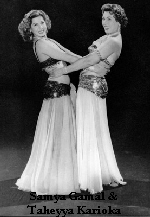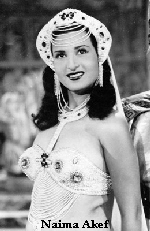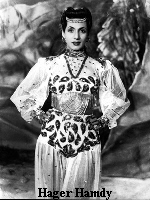
A Brief Background of Belly Dance
The name for Middle Eastern dance in Arabic is Raqs Sharqi or Raks El Sharki, meaning ‘Oriental Dance’ or ‘Dance of the Orient’. Oriental dance is often thought of as the dances of Asia, due to the use of the term ‘the Far East’ to describe the Continent of Asia. Often forgotten, the Mid-East or Middle East is also referred to as ‘The Orient’ (remember the book, The Orient Express); The train traveled from Europe to Turkey.
 Although its true origins are unknown, Raqs Sharqi is one of the oldest forms of dance. It is performed in at least one hundred fifty different countries, from Egypt to Scotland. Many people believe that the art form traveled with the gypsy peoples from the Middle East, spreading from Egypt and surrounding areas up through India and beyond. Although its true origins are unknown, Raqs Sharqi is one of the oldest forms of dance. It is performed in at least one hundred fifty different countries, from Egypt to Scotland. Many people believe that the art form traveled with the gypsy peoples from the Middle East, spreading from Egypt and surrounding areas up through India and beyond.
The term belly dance was coined by Sol Bloom in 1893 at the Chicago World Fair when the first Middle Eastern performers were first seen in North America. Bloom sensationalized the translation of the French description of the dance, knowing that it would increase the curiosity of the Victorian audiences. In a time when showing your ankle in public was taboo, the name belly dancing would have been World Fair when the first Middle Eastern performers were first seen in North America. Bloom sensationalized the translation of the French description of the dance, knowing that it would increase the curiosity of the Victorian audiences. In a time when showing your ankle in public was taboo, the name belly dancing would have been  scandalous. It was a publicity stunt that turned into a great money making scheme. scandalous. It was a publicity stunt that turned into a great money making scheme.
The dance’s popularity in the Middle East has grown over the past fifty years. The Hollywood era of the 30’s through 50’s had great influence on the Middle Eastern culture. Middle Eastern cinema stars had multi-faceted talents and danced, sang, and acted just as the stars of Hollywood did in that era. Due to the popularity of the dance form, it is now performed in nightclubs and 5-Star hotels in the Middle East.
Variations of Middle Eastern Dance
There are many variations of Middle Eastern dance, with each region and town having their own style. In North America, some performers choose to study authentic styles, while others introduce their own creative interpretation of the art form. Raqs Sharqi and Raqs Baladi are commonly seen in Canada.
Raqs Sharqi, as mentioned above translated from the Arabic, means ‘Dance of the Orient’ or ‘Dance of the East’, commonly referred to as Oriental Dance in North America. These terms generally refer to the classical Egyptian (Hollywood style) dance. It is performed in a theatrical style of venue, such as a theatre, restaurant or corporate function. The costuming is usually glamorous and can be a one-piece Baladi dress or a two-piece Bedla (bra-belt set). These costumes are often embellished with sequins and beads and are frequently made from glittery fabrics. The costume for Raqs Sharqi is created from a combination of different types of dance influences, from Hollywood, Egypt, Turkey, and Lebanon. The dance is strong, graceful, elegant, sensual, playful, and dramatic.
Raqs Baladi, meaning ‘Dance of the People’ is another form of Middle Eastern dance. This dance form is more traditional and uses a more conservative type of dress, similar to the types of dress worn by Egyptian women. This type of dance is essentially the dance Arabic women perform at parties, weddings, and at home. It uses many heavy hip movements and is not as polished as Raqs Sharqi, due to the fact that it is not performed in a professional setting. The main focus of Raqs Baladi is the hips, and women usually tie a large scarf around this area of the body to accentuate the dance movements.
Folkloric or Ethnic styles of dance are other variations of Middle Eastern dance. Such dances include the Haglallah (Libyan), the Khaleegy (Saudi Arabia), Gawazzee (Lower Egypt), Karsilama (Turkish), Raqs Assay (Women’s cane dance), and Raqs Shamadan (Candelabra dance).
Fantasy Fusion styles include North American tribal style, Wings of Isis, veil, sword, and fan dances.
Banat El Nile Middle Eastern Dance Academy 2005
|